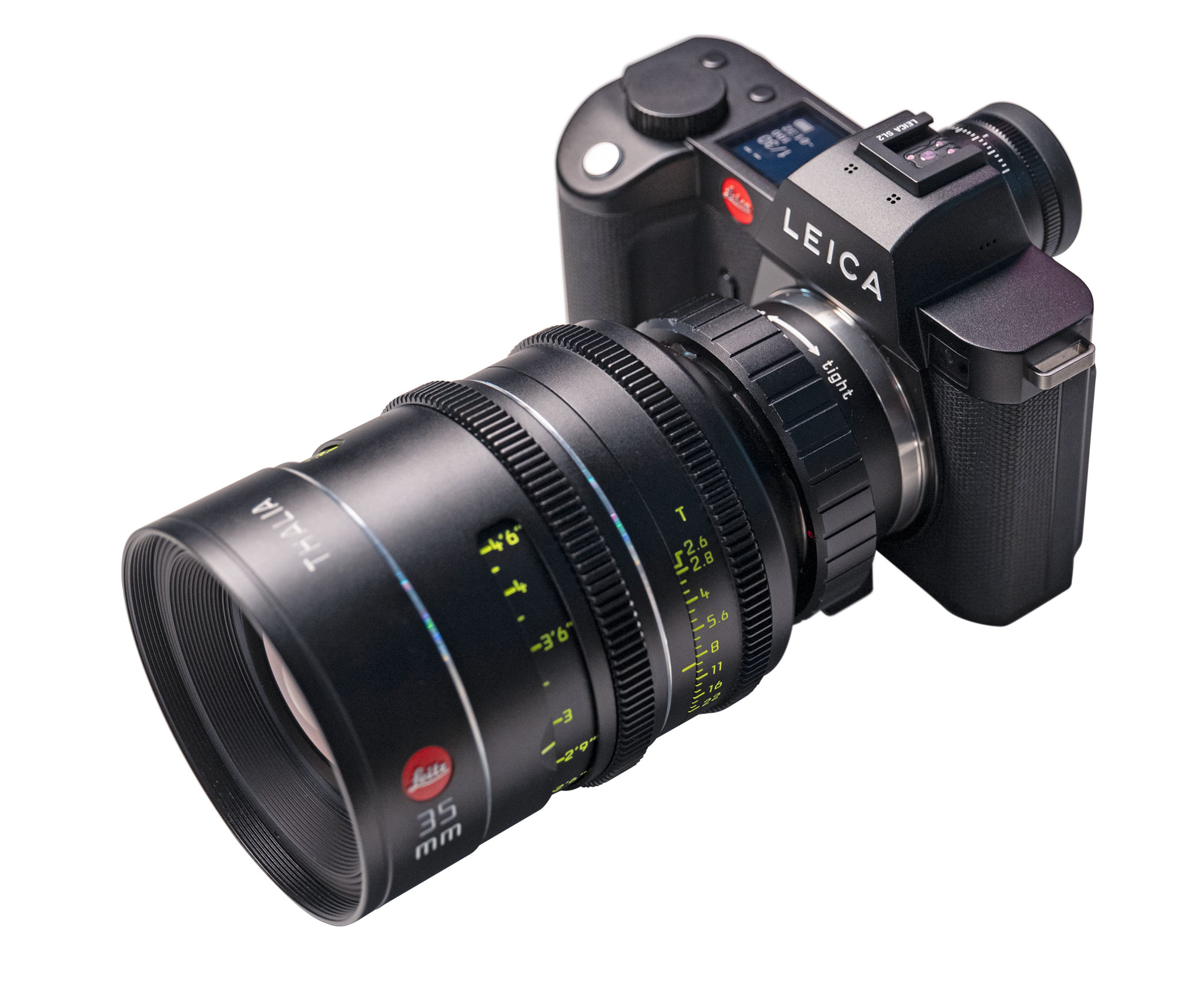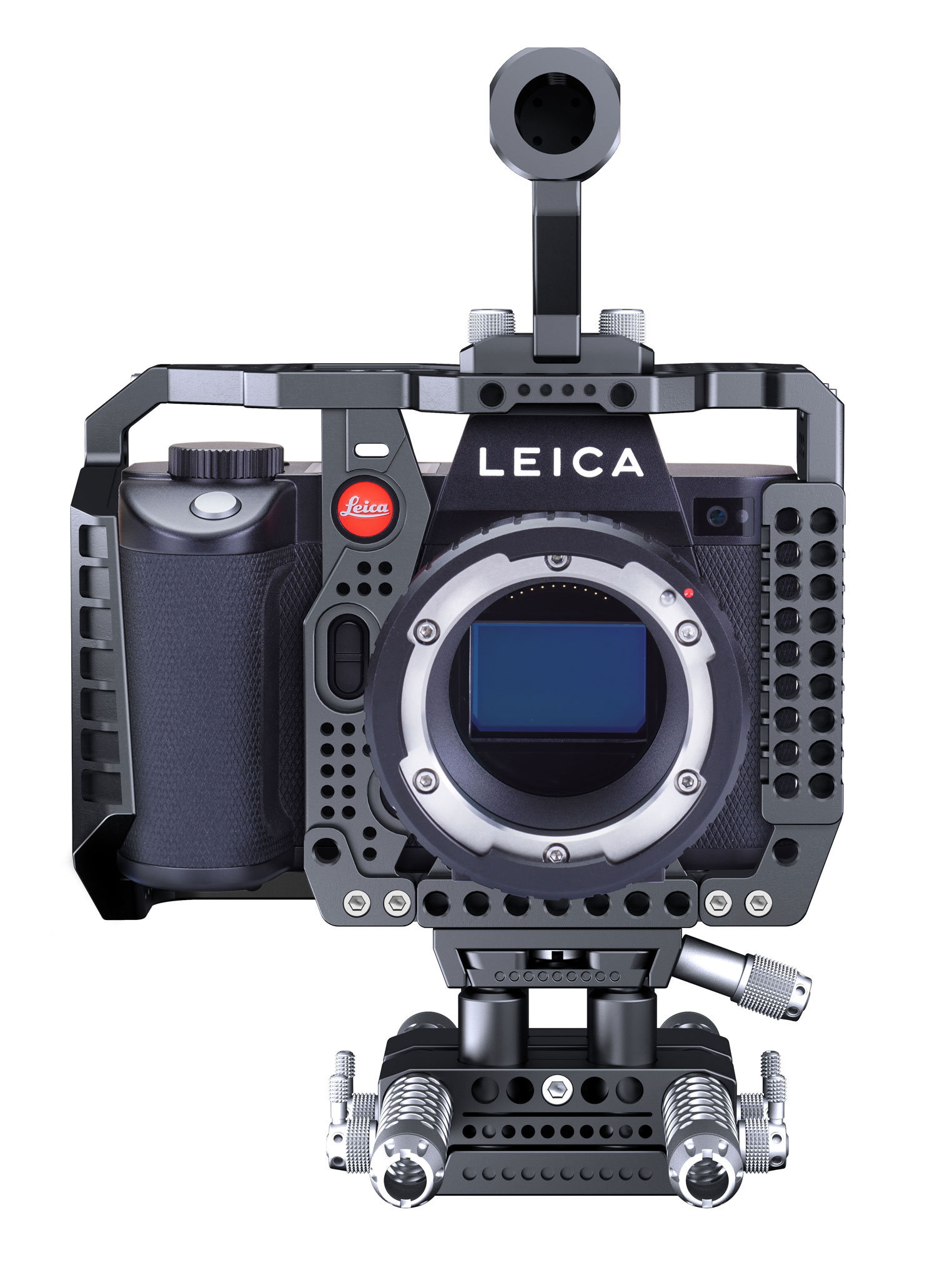Download our 9-page PDF Report on Leica SL2. This is a preview from the next edition of FDTimes – Issue 98, November 2019.
The L-Mount Alliance
At Photokina in September 2018, Leica Camera invited Panasonic and SIGMA to join together in a new L-Mount Alliance. They standardized on the L-Mount’s flange focal depth (FFD) of 20 mm and inside diameter of 51.6 mm.
The short flange focal depth offers a number of design advantages, both optical and mechanical. Furthermore, with mechanical adapters, you can attach almost any cine lens, whether PL, PV, LPL, Mitchell, SP70, and many more.
Sony’s Full Frame and shallow flange depth mirrorless E-Mount a7 was introduced in October 2013. In September 2017, that same E-mount surfaced on Sony VENICE and in September 2019 on Sony FX9. But the unique thing about the L-Mount is the cross-pollination across 3 manufacturers, with shared lenses, camera body mounts, electronic protocols and metadata.
The latest L-Mount Alliance cameras arrived in quick succession. Panasonic S1H was presented in Hollywood on May 31. SIGMA fp launched in Tokyo on July 11. And the new Leica SL-2 premieres today at Paris Photo on November 6.
Leica SL2
The L-Mount was originally called T-Mount and it came with the Leica T mirrorless, interchangeable lens, APS-C format camera in 2014. A year later, 2015, the Leica SL (Type 601) was launched in Leica Format (Full Frame, 36x24mm) with the same mount now renamed “L-Mount.” The SL’s autofocus and auto-exposure could capture decisive moments in a millisecond.
The new Leica SL2 (Type 2998) is the result of suggestions from photographers and SL owners for improved ergonomics, a more comfortable grip, in-body image stabilization and 4K Full Frame video. This is the pinnacle of Leica Format photography and it now includes superb cine capabilities.
The familiar three-button tactile controls and menus on the back unify Leica’s ergonomic design concept across M, Q, CL and SL product lines. The L-Mount’s 20mm shallow flange depth and the in-camera stabilization accommodate legendary Leica M, S and R lenses. PL, LPL and other cine lenses not only fit but also benefit from the 5-axis sensor stabilization. Meanwhile, Leica continues to roll out an impressive series of new SL lenses that are among the finest Leica has ever created.
Leica SL2 for Stills
Full Metal Body
The SL2 mirrorless L-Mount camera is designed and built in Germany. The body is made of aluminum and magnesium with a leatherette anti-slip, grippy cover.
Streamlined design with new status menus
Navigation and selection through menus is mainly done by buttons, wheels and joystick operation. Touch operation is limited to the functions that are practical—for example, sliders for exposure compensation. The newly designed status screen allows direct access to the selected function. There are status screens for the photo and video mode with preselected direct access buttons.
Improved ergonomics
The Leica SL2 is the same size as its predecessor. It is IP54 protected against spray and dust.
47 megapixel CMOS Sensor and no OLPF
The 47 MP sensor mode in Leica Format (Full Frame) can be windowed to a 20 MP frame to be used Leica TL or other APS-C format lenses. As for OLPF, Leica prefers to avoid Optical Low Pass Filters.
New Leica Object Detection Autofocus
Leica Object Detection AF includes, among various modes, face recognition and can even detect whether the subject is stationary or moving. It then switches between motion and focus priority.
Image stabilization and sensor-shift technology
The SL2 has a 5-axis stabilized sensor. It works with lenses that have internal optical image stabilization as well those without.
In multishot mode, you can shoot up to eight consecutive frames where the sensor is shifted in half-pixel increments between exposures. This results in 187 megapixel images: great for murals, background plates and billboards.
Leica EyeRes viewfinder
The 5.76 megapixels electronic viewfinder is even better than before. (The SL EVF was 4.4 MP.) The touchscreen monitor at the rear has increased in size from 2.95 to 3.2 inches diagonal, and from 1.04 to 2.1 megapixel resolution.
Maestro III processor
The new Maestro III processor enables autofocus to be much faster and shutter release to be immediate.
SD Card Slots
Two UHS-II SD card slots can simultaneously save photo files in RAW DNG and JPEG format.
L-Mount
The L-Mount is not only compatible with the ever-growing portfolio of SL-System lenses, but also with lenses of the TL-System and with the legendary lenses of Leica’s M, S and R-Systems via adapter, providing more than 170 Leica lens options. The L-Mount Alliance expands this scope of possibilities even further, by giving SL2 photographers access to L-mount-compatible lenses from Sigma and Panasonic.
Leica FOTOS App
The Leica FOTOS app for Android and iOS connects to the camera via Wi-Fi or Bluetooth (where available). It lets you access the camera’s live view, remotely release the shutter and adjust aperture, ISO, shutter speed and exposure compensation. It also allows wireless control of the shutter release.
Pictures can also be transferred to the Leica FOTOS app in DNG RAW data format. Many new features and an iPad version of Leica FOTOS will be available in version 2.0 on November 21, 2019.
Shipping this November
The Leica SL2 is available from November 21, 2019, at a recommended retail price of 5,990 Euros.
Leica SL2 for Cine
Stephan Schulz, DGPh, Head of Product Management for Leica Professional Camera Systems, explains the SL2 Camera’s Cine Capabilities.
Photo and Cine Modes
The SL2 camera menu is designed with 2 separate modes: “Photo” and “Cine (Video).” All settings for Autofocus, Sensitivity, White Balance, etc. are chosen separately for each mode and remain independent. So, when switching from Photo to Cine, there is no need to change settings. For example, with most other cameras (and with the previous Leica SL), when setting white balance in still mode, you had to redo white balance again when shooting video.
The SL2 camera’s new Cine Mode speaks the way a DP might talk to the AC. Only manual exposure is available. All automatic exposure modes are disabled. Shutter speed is displayed in familiar spinning mirror shutter degrees (11.2° to 358°).
In Still Photo mode, you’ll see “ISO.” In Cine Mode, you see “EI / ASA.” (Those are familiar friends. For example, film cans were originally labeled with ASA and later EI. Arricam film camera magazines had button to select the ASA rating.
Exposure is directly comparable to cine lenses with T-Stop engravings on the aperture ring. L-Mount lens apertures act and display with true T-Stop values—the light loss is calculated.
ISO/ASA speed starts at 50.
We think the Cine mode may help to integrate the SL2 camera into motion picture productions.
In-Camera Body Image Stabilization
The 5-axis in-camera image stabilization does a good job not only with L-Mount lenses, but also with M-Lenses, R-Lenses, S-Lenses PL and LPL Mount cine lenses as well. In-camera image stabilization opens up exciting possibilities for smooth moves and steadier shots that previously were not possible with cine lenses and still lenses that lack O.I.S.
USB-C
The SL2 has a USB-C connector that lets you operate the camera with an external USB-C power source for longer run-times. This connection also enables USB-C charging of the camera battery when the camera is in standby or OFF. You can tether the SL2 to Lightroom with a plug-in and a USC-C cable.
Mic and Headphone Connectors
An external microphone and headphone can now be connected directly to the SL2’s 3.5 mm jacks without needing any adaptor.
Hostile Environments
The camera is IP54 protected against dust and spray water and operates down to -10° Celsius.
No Fan
The SL2 does not have a cooling fan, which saves power and keeps things quiet. It is a very capable high-end cine camera with impressive bit-rates up to 400 Mbps.
Pixel Mixing
The SL2 sensor is 47.3 MP. How do we get 4K and FHD video images? The answer is pixel mixing, which is basically an alogrithm to reduce the higher resolution of the sensor. (5K mode is full scan and cropped.)
Rolling Shutter
The camera has a rather fast rolling shutter (ca. 16 ms in Full Frame mode). Super35 crop mode is expected to be even faster (maybe below 10 ms.)
Full Frame and Super35 Crop Sensor Modes
All 4K (C4K and UHD)and FHD (Full HD) modes are possible in both Full Frame and APS-C (Super35) crop mode. That means Super35 lenses or lightweight Leica TL autofocus lenses can be used without having to crop in post.
Frame Rates, Resolution, Bit Depth and Recording
Frame rates for both C4K and UHD resolutions are 24, 25, 29.97, 50 and 59.94 fps at 10-bit 4:2:2.
Up to 29.97 fps, 10-bit 4:2:2 can be recorded internally onto an SD card.
50 and 59.97 fps 10-bit 4:2:2 can be recorded externally via the full size HDMI output.
All 10-bit files can be stored in a .MOV container format at high data rates on the SD card with ALL-INTRA (low) compression. Every frame keeps all its information. This results in higher quality (but larger files.)
FHD is available up to 150 -180 fps, but only 8-bit.
The SL2 can record 5K in a 1.33:1 (4:3) aspect ratio in Super35 Crop Mode. This could be interesting for anamorphic lenses. Recording is 10-bit 4:2:0 on the internal SD card. (The HDMI output is not capable of 5K.)
The 10-bit 4:2:2 formats allow the use of Rec. 709, Rec. 2020 (HLG) and L-Log. Leica L-Log has been completely re-designed with improved characteristics. An internal and external LUT for preview is available.
The SL2 also offers more compressed 8-bit 4:2:2 Long-GOP files in Rec. 709 .MP4 containers for immediate distribution or proxy editing.
Download additional information, images, product shots and specs in this 9-page PDF Report on Leica SL2 — a preview from the next edition of FDTimes – Issue 98, November 2019.









